-
 Bitcoin
Bitcoin $85,273.6626
0.85% -
 Ethereum
Ethereum $1,597.6312
0.50% -
 Tether USDt
Tether USDt $0.9998
-0.01% -
 XRP
XRP $2.0814
0.22% -
 BNB
BNB $588.2220
-0.57% -
 Solana
Solana $138.8700
3.13% -
 USDC
USDC $0.9998
-0.01% -
 Dogecoin
Dogecoin $0.1579
1.41% -
 TRON
TRON $0.2432
-0.04% -
 Cardano
Cardano $0.6271
1.79% -
 UNUS SED LEO
UNUS SED LEO $9.3596
2.38% -
 Chainlink
Chainlink $12.7310
1.67% -
 Avalanche
Avalanche $19.6363
2.95% -
 Stellar
Stellar $0.2463
1.05% -
 Toncoin
Toncoin $2.9662
-1.08% -
 Shiba Inu
Shiba Inu $0.0...01216
1.10% -
 Hedera
Hedera $0.1649
-0.43% -
 Sui
Sui $2.1393
0.59% -
 Bitcoin Cash
Bitcoin Cash $337.3359
-0.35% -
 Hyperliquid
Hyperliquid $17.9206
7.39% -
 Polkadot
Polkadot $3.7398
0.47% -
 Litecoin
Litecoin $75.9343
0.22% -
 Bitget Token
Bitget Token $4.4770
2.45% -
 Dai
Dai $1.0000
0.00% -
 Ethena USDe
Ethena USDe $0.9992
0.00% -
 Pi
Pi $0.6465
4.78% -
 Monero
Monero $213.1357
-2.25% -
 Uniswap
Uniswap $5.2278
0.30% -
 OKB
OKB $50.9554
1.49% -
 Pepe
Pepe $0.0...07205
0.99%
How is a zkSNARK circuit on a blockchain designed?
Designing a zkSNARK circuit on a blockchain involves defining the problem, constructing an arithmetic circuit, converting to QAP, generating a CRS, creating and verifying proofs, and optimizing for efficiency and security.
Apr 12, 2025 at 03:01 pm
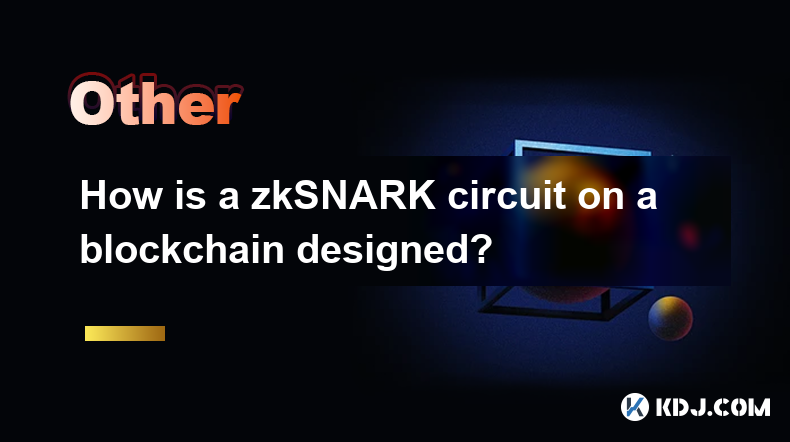
Designing a zkSNARK circuit on a blockchain involves several intricate steps and considerations. zkSNARKs, or Zero-Knowledge Succinct Non-Interactive Arguments of Knowledge, are cryptographic protocols that allow one party to prove to another that a statement is true without revealing any information beyond the validity of the statement itself. In the context of blockchains, these circuits are used to enhance privacy and efficiency. Let's delve into the process of designing such a circuit.
Understanding the Basics of zkSNARKs
Before diving into the design of a zkSNARK circuit, it's crucial to understand the foundational concepts. zkSNARKs consist of three algorithms: key generation, proving, and verification. The key generation algorithm produces a common reference string (CRS), which is used by the prover to generate proofs and by the verifier to check these proofs. The proving algorithm takes a statement and a witness, and outputs a proof. The verification algorithm checks the proof against the statement using the CRS.
Defining the Problem Statement
The first step in designing a zkSNARK circuit is to clearly define the problem statement. This involves identifying what needs to be proven and what information should remain private. For example, in a blockchain context, you might want to prove that a transaction is valid without revealing the sender, receiver, or transaction amount. The problem statement must be well-defined and specific to ensure that the circuit can be accurately constructed.
Constructing the Arithmetic Circuit
Once the problem statement is clear, the next step is to construct an arithmetic circuit that represents the computation to be proven. An arithmetic circuit is a directed acyclic graph where nodes represent operations (such as addition, multiplication, and constants), and edges represent the flow of data. Each gate in the circuit must be designed to correspond to a specific operation in the computation.
- Start by breaking down the computation into smaller, manageable parts.
- Represent each part as a series of gates and wires.
- Ensure that the circuit correctly models the entire computation from input to output.
Converting to Quadratic Arithmetic Program (QAP)
After constructing the arithmetic circuit, it must be converted into a Quadratic Arithmetic Program (QAP). A QAP is a set of polynomials that represent the circuit's constraints. This conversion is crucial because zkSNARKs operate on polynomial commitments.
- Identify the constraints of the arithmetic circuit.
- Transform these constraints into a system of quadratic equations.
- Convert the system of equations into a QAP using polynomial interpolation.
Generating the Common Reference String (CRS)
The next step is to generate the Common Reference String (CRS), which is used for both proving and verifying. The CRS is created using the key generation algorithm of the zkSNARK protocol. This step involves generating random values and committing them to polynomials.
- Use a trusted setup to generate the random values.
- Commit these values to polynomials to create the CRS.
- Ensure that the CRS is securely distributed to all parties involved.
Creating the Proof
With the QAP and CRS in place, the prover can now generate the proof. The prover takes the witness (the private input) and the public input, and uses them to compute the proof. This involves evaluating the polynomials of the QAP using the witness and CRS.
- Evaluate the polynomials of the QAP with the witness.
- Use the CRS to commit to these evaluations.
- Generate the final proof using the committed values.
Verifying the Proof
The final step in the zkSNARK process is verification. The verifier uses the public input, the proof, and the CRS to check the validity of the proof. The verification process is designed to be efficient and can be performed without knowledge of the witness.
- Use the public input and the proof to evaluate the verification polynomial.
- Check if the evaluation matches the committed values in the CRS.
- If the check passes, the proof is considered valid.
Implementing the Circuit on a Blockchain
Implementing a zkSNARK circuit on a blockchain involves integrating the circuit into the blockchain's protocol. This requires modifying the blockchain's consensus mechanism to include the zkSNARK verification process. The implementation must be carefully designed to ensure that it does not compromise the blockchain's security or performance.
- Modify the blockchain's protocol to include zkSNARK verification.
- Ensure that the verification process is integrated seamlessly with the blockchain's existing operations.
- Test the implementation thoroughly to ensure its correctness and efficiency.
Optimizing the Circuit
Optimizing a zkSNARK circuit is crucial for ensuring its practicality on a blockchain. Optimization involves reducing the size of the circuit and improving the efficiency of the proving and verification processes.
- Minimize the number of gates and wires in the arithmetic circuit.
- Use advanced techniques such as polynomial commitment schemes to reduce the size of the proof.
- Implement batching techniques to verify multiple proofs in a single operation.
Ensuring Security and Privacy
Ensuring the security and privacy of a zkSNARK circuit is paramount. The circuit must be designed to protect against potential attacks and vulnerabilities.
- Conduct thorough security audits to identify and mitigate potential vulnerabilities.
- Ensure that the trusted setup process is secure and that the CRS is not compromised.
- Implement measures to protect the privacy of the witness and prevent information leakage.
Frequently Asked Questions
Q: Can zkSNARK circuits be used for any type of computation on a blockchain?
A: While zkSNARK circuits can theoretically be used for any type of computation, they are most practical for computations that can be efficiently represented as arithmetic circuits. Complex computations may result in large circuits, which can be challenging to implement and verify on a blockchain.
Q: How does the trusted setup process impact the security of zkSNARKs?
A: The trusted setup process is critical for the security of zkSNARKs. If the random values used in the setup are compromised, it could allow an attacker to forge proofs. Therefore, it's essential to conduct the setup in a secure and transparent manner, often involving multiple parties to ensure no single entity can compromise the setup.
Q: What are the main challenges in implementing zkSNARK circuits on a blockchain?
A: The main challenges include the computational complexity of generating and verifying proofs, the need for a secure trusted setup, and the integration of the verification process into the blockchain's consensus mechanism. Additionally, optimizing the circuit to reduce its size and improve efficiency is a significant challenge.
Q: How do zkSNARKs compare to other zero-knowledge proof systems like zkSTARKs?
A: zkSNARKs and zkSTARKs are both zero-knowledge proof systems, but they have different characteristics. zkSNARKs require a trusted setup but offer smaller proof sizes and faster verification times. zkSTARKs, on the other hand, do not require a trusted setup but have larger proof sizes and slower verification times. The choice between them depends on the specific requirements of the blockchain application.
Disclaimer:info@kdj.com
The information provided is not trading advice. kdj.com does not assume any responsibility for any investments made based on the information provided in this article. Cryptocurrencies are highly volatile and it is highly recommended that you invest with caution after thorough research!
If you believe that the content used on this website infringes your copyright, please contact us immediately (info@kdj.com) and we will delete it promptly.
- XRP Price Prediction 2024-2025: Golden Cross Signals Potential Breakout to $3
- 2025-04-19 20:30:13
- Pi Coin: Why the Price Keeps Falling and What Could Stop It
- 2025-04-19 20:30:13
- Shiba Inu (SHIB) Is Grabbing Fresh Attention Thanks to a New Viral Post From the Official SHIB Team
- 2025-04-19 20:25:13
- The MELANIA project team has sparked a wave of speculation after offloading nearly three million Melania tokens
- 2025-04-19 20:25:13
- Galaxy Digital's Withdrawal and Staking of 606,000 SOL Tokens Sends Shockwaves Through the Solana Ecosystem
- 2025-04-19 20:20:15
- Macroeconomist and investment strategist Lyn Alden revises her Bitcoin (BTC) price prediction to $80,000
- 2025-04-19 20:20:15
Related knowledge

Can ICOs in the blockchain space still make money?
Apr 17,2025 at 08:29pm
The landscape of Initial Coin Offerings (ICOs) in the blockchain space has evolved significantly since their peak in 2017 and 2018. Despite the increased regulatory scrutiny and the rise of alternative fundraising methods like Security Token Offerings (STOs) and Initial Exchange Offerings (IEOs), ICOs can still be a viable way to raise funds and generat...

Can the application of blockchain in supply chain finance bring benefits?
Apr 15,2025 at 04:00pm
Can the application of blockchain in supply chain finance bring benefits? The integration of blockchain technology into supply chain finance has garnered significant attention in the cryptocurrency and financial sectors. This article explores how blockchain can potentially revolutionize supply chain finance, detailing its benefits and providing a compre...
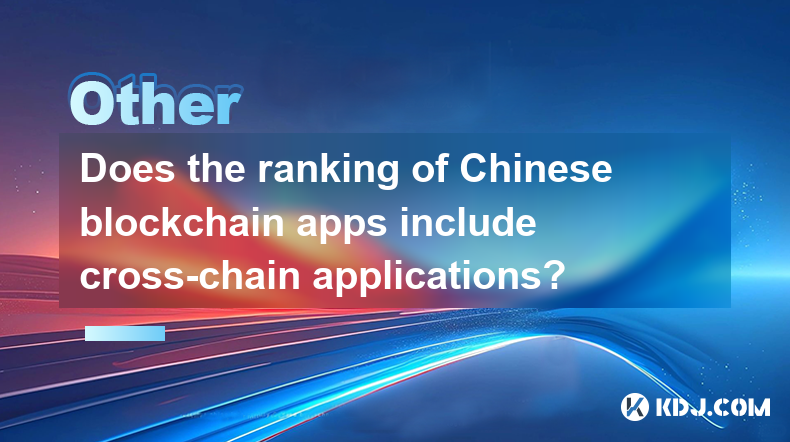
Does the ranking of Chinese blockchain apps include cross-chain applications?
Apr 14,2025 at 04:00pm
The ranking of Chinese blockchain apps is a comprehensive evaluation that takes into account various aspects such as user base, transaction volume, and technological innovation. A pertinent question arises regarding whether these rankings include cross-chain applications. Cross-chain applications, which allow different blockchain networks to interact an...
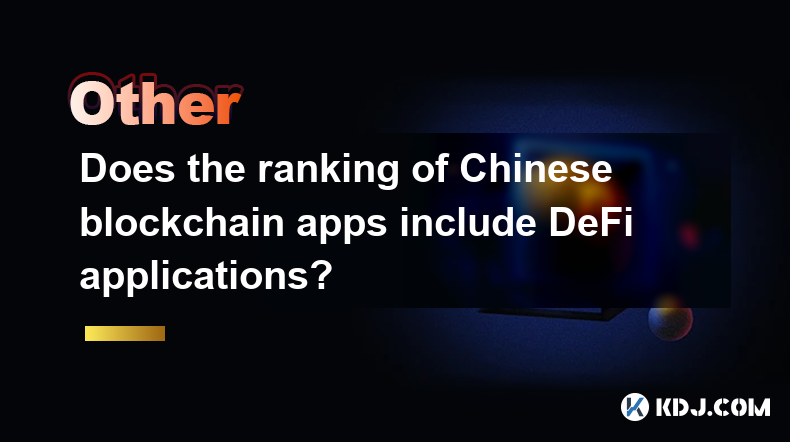
Does the ranking of Chinese blockchain apps include DeFi applications?
Apr 15,2025 at 06:57am
The ranking of Chinese blockchain apps is a comprehensive list that showcases the most popular and influential applications within the cryptocurrency ecosystem. One question that often arises is whether these rankings include DeFi applications. To answer this, we need to delve into the specifics of how these rankings are compiled and what types of appli...
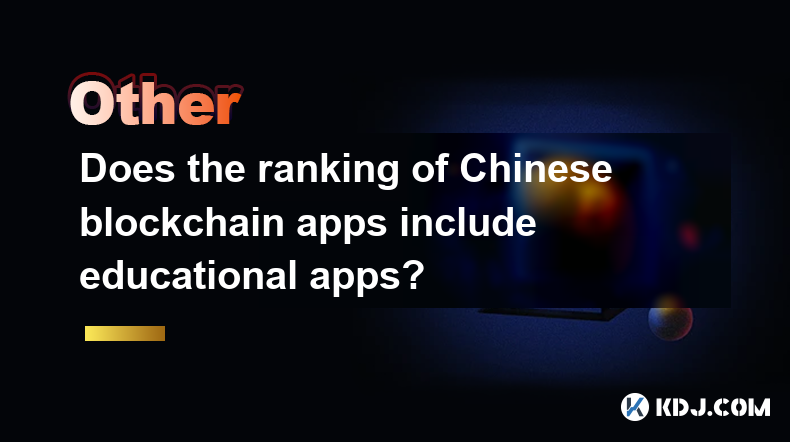
Does the ranking of Chinese blockchain apps include educational apps?
Apr 16,2025 at 03:35am
The ranking of Chinese blockchain apps often includes a variety of categories, from finance and gaming to social networking and beyond. One question that frequently arises is whether these rankings include educational apps. To address this, we need to delve into the specifics of how blockchain apps are categorized and ranked in China, and whether educat...
Does the ranking of Chinese blockchain apps include enterprise-level applications?
Apr 15,2025 at 06:42am
The ranking of Chinese blockchain apps often includes a variety of applications, ranging from consumer-focused to enterprise-level solutions. Understanding the scope and criteria for these rankings is essential to determine if enterprise-level applications are included. This article delves into the specifics of how Chinese blockchain app rankings are co...

Can ICOs in the blockchain space still make money?
Apr 17,2025 at 08:29pm
The landscape of Initial Coin Offerings (ICOs) in the blockchain space has evolved significantly since their peak in 2017 and 2018. Despite the increased regulatory scrutiny and the rise of alternative fundraising methods like Security Token Offerings (STOs) and Initial Exchange Offerings (IEOs), ICOs can still be a viable way to raise funds and generat...

Can the application of blockchain in supply chain finance bring benefits?
Apr 15,2025 at 04:00pm
Can the application of blockchain in supply chain finance bring benefits? The integration of blockchain technology into supply chain finance has garnered significant attention in the cryptocurrency and financial sectors. This article explores how blockchain can potentially revolutionize supply chain finance, detailing its benefits and providing a compre...

Does the ranking of Chinese blockchain apps include cross-chain applications?
Apr 14,2025 at 04:00pm
The ranking of Chinese blockchain apps is a comprehensive evaluation that takes into account various aspects such as user base, transaction volume, and technological innovation. A pertinent question arises regarding whether these rankings include cross-chain applications. Cross-chain applications, which allow different blockchain networks to interact an...

Does the ranking of Chinese blockchain apps include DeFi applications?
Apr 15,2025 at 06:57am
The ranking of Chinese blockchain apps is a comprehensive list that showcases the most popular and influential applications within the cryptocurrency ecosystem. One question that often arises is whether these rankings include DeFi applications. To answer this, we need to delve into the specifics of how these rankings are compiled and what types of appli...

Does the ranking of Chinese blockchain apps include educational apps?
Apr 16,2025 at 03:35am
The ranking of Chinese blockchain apps often includes a variety of categories, from finance and gaming to social networking and beyond. One question that frequently arises is whether these rankings include educational apps. To address this, we need to delve into the specifics of how blockchain apps are categorized and ranked in China, and whether educat...

Does the ranking of Chinese blockchain apps include enterprise-level applications?
Apr 15,2025 at 06:42am
The ranking of Chinese blockchain apps often includes a variety of applications, ranging from consumer-focused to enterprise-level solutions. Understanding the scope and criteria for these rankings is essential to determine if enterprise-level applications are included. This article delves into the specifics of how Chinese blockchain app rankings are co...
See all articles























































































